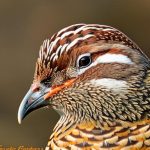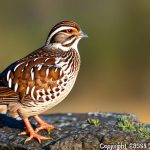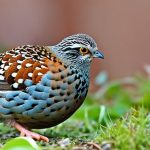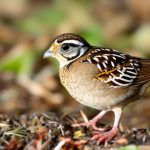Bobwhite quail chicks are a popular game bird species that are commonly raised for hunting and conservation purposes. These small, ground-dwelling birds are known for their distinctive call and are native to the United States, Mexico, and the Caribbean. Bobwhite quail chicks are precocial, meaning they are able to feed themselves shortly after hatching and are relatively independent at a young age. However, despite their hardy nature, bobwhite quail chicks are still susceptible to a variety of environmental, nutritional, and health-related challenges that can affect their survival and growth. In order to successfully rear bobwhite quail chicks, it is important for breeders and conservationists to understand the common causes of chick mortality, environmental factors affecting chick survival, nutritional needs, disease and parasite control, and effective management practices.
Key Takeaways
- Bobwhite quail chicks are small, ground-dwelling birds that are popular for rearing and hunting.
- Common causes of bobwhite quail chick mortality include predation, dehydration, and disease.
- Environmental factors such as temperature, humidity, and habitat quality can significantly impact bobwhite quail chick survival.
- Bobwhite quail chicks require a diet high in protein and essential nutrients for optimal growth and development.
- Disease and parasite control is essential for maintaining the health and well-being of bobwhite quail chicks.
Common Causes of Bobwhite Quail Chick Mortality
Bobwhite quail chicks are vulnerable to a number of factors that can contribute to high mortality rates. One of the most common causes of chick mortality is predation, as these small birds are easy targets for a variety of predators including snakes, raccoons, and birds of prey. Additionally, bobwhite quail chicks are also susceptible to extreme weather conditions such as cold temperatures and heavy rainfall, which can lead to hypothermia and drowning. Inadequate nutrition and dehydration can also contribute to chick mortality, especially in captive rearing situations where access to food and water may be limited. Finally, disease and parasitic infections can also take a toll on bobwhite quail chick populations, leading to high mortality rates if not properly managed.
Another common cause of bobwhite quail chick mortality is accidental injury, which can occur during handling or transportation. Additionally, overcrowding in rearing facilities can lead to stress and aggression among chicks, resulting in injuries and even death. It is important for breeders and conservationists to be aware of these common causes of chick mortality in order to implement effective management practices and minimize the risk of loss.
Environmental Factors Affecting Bobwhite Quail Chick Survival
Environmental factors play a significant role in the survival and growth of bobwhite quail chicks. Habitat loss and fragmentation are major threats to wild bobwhite quail populations, as they rely on diverse grassland and shrubland habitats for nesting and foraging. In captive rearing situations, providing a suitable environment for bobwhite quail chicks is essential for their well-being. Temperature and humidity levels must be carefully monitored to ensure that chicks are kept warm and dry, especially during the first few weeks of life when they are most vulnerable. Access to clean water and appropriate bedding materials is also crucial for maintaining a healthy environment for bobwhite quail chicks.
In addition to habitat and climate considerations, social dynamics within a group of bobwhite quail chicks can also impact their survival. Aggression and competition for food and resources can lead to stress and injury among chicks, so it is important to provide adequate space and resources to minimize these negative interactions. Overall, understanding and managing environmental factors is essential for promoting the survival and well-being of bobwhite quail chicks in both wild and captive settings.
Nutritional Needs of Bobwhite Quail Chicks
Meeting the nutritional needs of bobwhite quail chicks is essential for their growth and development. In the wild, bobwhite quail chicks feed on a variety of insects, seeds, and vegetation to obtain the protein, vitamins, and minerals they need for healthy growth. In captive rearing situations, it is important to provide a balanced diet that mimics their natural food sources. Commercially available game bird starter feeds are often used to provide the necessary nutrients for bobwhite quail chicks, but supplementing with live insects or mealworms can also be beneficial.
Proper nutrition is especially critical during the first few weeks of life when bobwhite quail chicks are most vulnerable. Chicks should have access to fresh water at all times, as dehydration can quickly lead to health issues and mortality. Additionally, providing access to grit or small stones can help chicks with digestion by aiding in the breakdown of food in their gizzards. Overall, understanding the nutritional needs of bobwhite quail chicks and providing a balanced diet is essential for promoting healthy growth and development.
Disease and Parasite Control in Bobwhite Quail Chicks
Disease and parasite control is an important aspect of managing bobwhite quail chick populations. Common diseases that can affect bobwhite quail chicks include coccidiosis, avian pox, and respiratory infections. Parasites such as mites, lice, and internal worms can also pose a threat to chick health and survival. Preventative measures such as vaccination, biosecurity protocols, and regular health checks can help minimize the risk of disease outbreaks in captive rearing facilities.
In addition to preventative measures, it is important to have a plan for treating sick or infested bobwhite quail chicks. Working with a veterinarian who has experience with avian species can help ensure that appropriate treatments are administered in a timely manner. Regular cleaning and disinfection of rearing facilities can also help reduce the risk of disease transmission among chick populations. By implementing effective disease and parasite control measures, breeders and conservationists can help promote the health and well-being of bobwhite quail chicks.
Management Practices for Bobwhite Quail Chicks
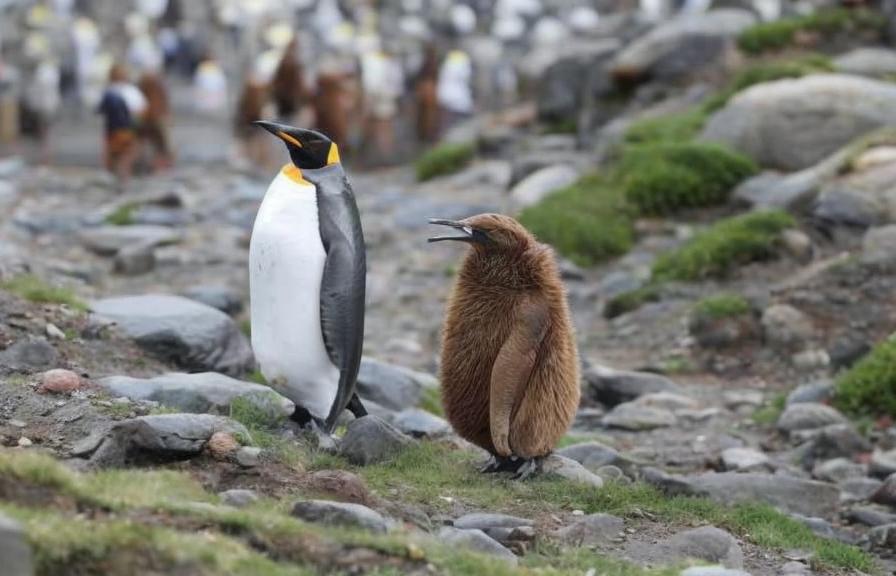
Effective management practices are essential for successfully rearing bobwhite quail chicks. Providing a suitable environment with access to food, water, and shelter is the foundation of good chick management. Monitoring temperature and humidity levels, especially during the first few weeks of life, is crucial for promoting chick survival. Additionally, managing social dynamics within a group of chicks by providing adequate space and resources can help minimize stress and aggression.
Regular health checks and observation of chick behavior can help identify potential issues early on so that appropriate interventions can be implemented. It is also important to have a plan for handling injured or sick chicks, as well as a protocol for disease prevention and control. Finally, proper record-keeping is essential for tracking chick growth, health status, and any management interventions that have been implemented. By implementing effective management practices, breeders and conservationists can help promote the successful rearing of bobwhite quail chicks.
Conclusion and Recommendations for Bobwhite Quail Chick Rearing
Rearing bobwhite quail chicks requires careful consideration of their environmental, nutritional, health, and management needs. Understanding the common causes of chick mortality, environmental factors affecting survival, nutritional requirements, disease and parasite control measures, and effective management practices is essential for promoting the successful rearing of bobwhite quail chicks. By implementing these recommendations, breeders and conservationists can help ensure the health and well-being of bobwhite quail chick populations in both captive rearing facilities and natural habitats. Additionally, ongoing research and collaboration within the avian conservation community can help further improve our understanding of best practices for rearing bobwhite quail chicks and contribute to the long-term sustainability of this iconic game bird species.
If you’re struggling with keeping your bobwhite quail chicks alive, it’s essential to ensure that you’re providing the right care and environment for them. One helpful resource to consider is an article on PoultryWizard that provides valuable insights into caring for goslings. Understanding the specific needs of young birds and implementing appropriate measures can significantly improve their chances of survival. Check out the article here for expert tips on nurturing young poultry.
FAQs
What are some common reasons why bobwhite quail chicks die?
Some common reasons why bobwhite quail chicks die include inadequate nutrition, exposure to extreme temperatures, predation, and disease.
How can I ensure the survival of bobwhite quail chicks?
To ensure the survival of bobwhite quail chicks, provide them with a balanced diet, a suitable environment with proper temperature and protection from predators, and regular health checks to prevent and treat any potential diseases.
What should I feed bobwhite quail chicks?
Bobwhite quail chicks should be fed a diet consisting of high-quality game bird starter feed, which provides the necessary nutrients for their growth and development.
What temperature is ideal for bobwhite quail chicks?
The ideal temperature for bobwhite quail chicks is around 95-100 degrees Fahrenheit during the first week of life, and then gradually decreased by 5 degrees each week until reaching the ambient temperature.
How can I protect bobwhite quail chicks from predators?
To protect bobwhite quail chicks from predators, provide them with a secure and enclosed brooder or pen, and use predator-proof fencing and netting to prevent access from potential threats such as snakes, raccoons, and birds of prey.
What are some common diseases that affect bobwhite quail chicks?
Some common diseases that affect bobwhite quail chicks include coccidiosis, infectious bronchitis, and avian influenza. It is important to monitor the health of the chicks and consult with a veterinarian if any signs of illness are observed.
Meet Walter, the feathered-friend fanatic of Florida! Nestled in the sunshine state, Walter struts through life with his feathered companions, clucking his way to happiness. With a coop that’s fancier than a five-star hotel, he’s the Don Juan of the chicken world. When he’s not teaching his hens to do the cha-cha, you’ll find him in a heated debate with his prized rooster, Sir Clucks-a-Lot. Walter’s poultry passion is no yolk; he’s the sunny-side-up guy you never knew you needed in your flock of friends!


